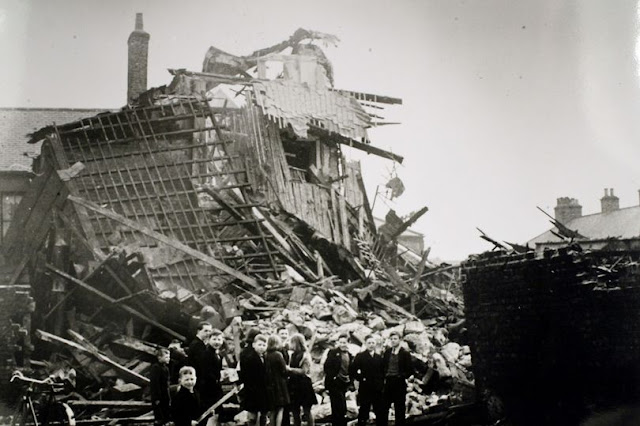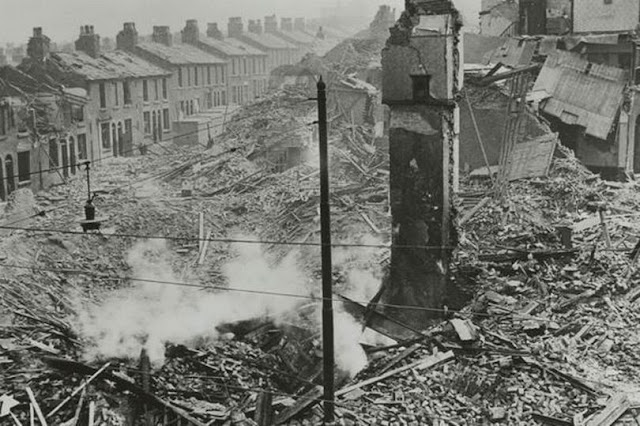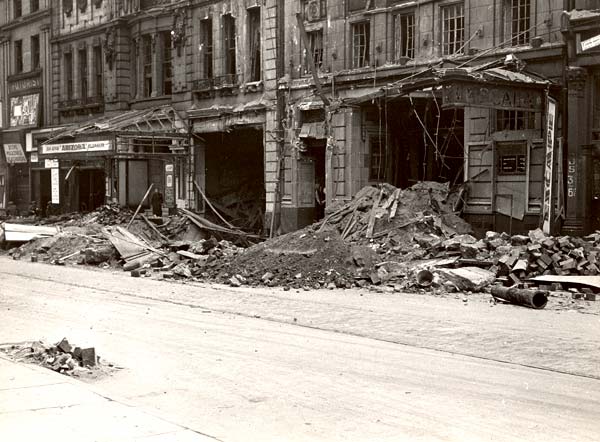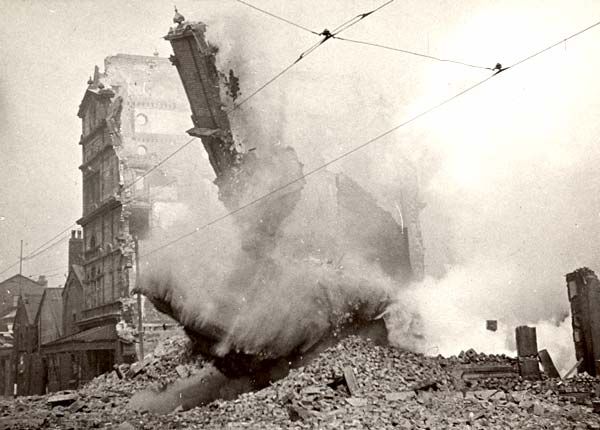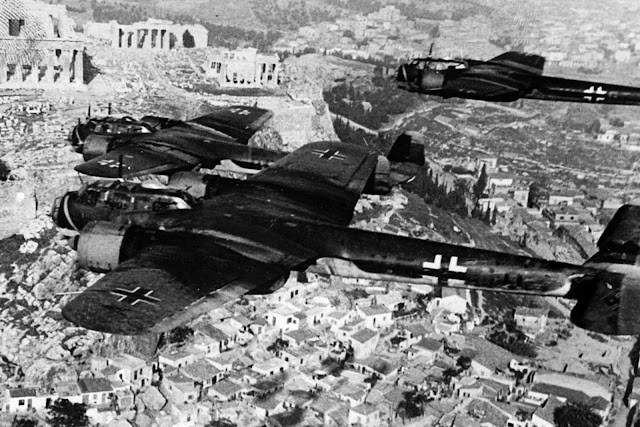Iran Invasion: The British/Russian invasion of Iran continues on 28 August 1941 without much interference from the defending Iranian Army. In central Iran, the British reach Shahabad, while the Soviet troops in Gilan province force the defending Iranians to surrender after several days of hard fighting. The Soviets take Mashhad after taking heavy casualties.
Not everything is easy for the Allies. At Ahvaz, the entry to the Zagros Mountains, Iranian forces are dug in and the Indian troops facing them decide to wait for developments elsewhere before attacking. In the Soviet sector, Iranian diehards make a stands at Ramsar. However, the Iranian military is in a shambles, with only isolated units holding out while others simply allow themselves to be bypassed and taken prisoner.
The Red Air Force bombs Tehran and drops leaflets urging surrender. While there are few casualties and there is no likelihood of the capital falling any time soon, everyone knows that the Allies are on their way. The royal family, with the exception of Reza Shah and Crown Prince, leave for Isfahan. When the Shah learns that his generals have been discussing surrender, he throws their ringleader to prison.
Ali Furughi forms a new government after the resignation of the previous Prime Minister on 27 August. He immediately begins negotiations for a surrender and orders a cease-fire, stating that this is:
Eastern Front: General Franz Halder, Chief of Staff of OKH, summarizes the army's appreciation of Soviet military strength. He notes that German units have identified 110 Soviet divisions, which equal 66 German divisions in real strength (Soviet divisions being smaller than those in the Wehrmacht), and an addition 40 divisions as a Soviet reserve. He writes that 19 of the 40 Soviet reserve divisions have had to be thrown into the line at Velikie Luki, leaving only 19 Soviet divisions as a reserve. The Germans are drastically underestimating Soviet reserve strength, as they will do throughout the war.
Halder is optimistic about the Wehrmacht's supply situation. He writes that the army expects to bring two panzer divisions and a motorized division up to full strength "Within six days," with another two-division panzer corps also being brought up to full strength within nine days. All of the panzer divisions have suffered serious losses since the beginning of Operation Barbarossa and are at between 20-60% of their original strength.
In the Far North sector, the Finnish forces which have crossed the Vuoksi River encircle the remnants of Soviet 43rd, 115th, and 123rd Rifle Divisions which had counterattacked the bridgehead. The Soviets are trapped in the villages of Sommee and Porlampi with little or no hope of rescue. However, the terrain is rough, full of swamps and forests, and the Soviets begin sneaking out through gaps in the Finnish line.
Elsewhere, Soviet troops facing encirclement also manage to escape destruction. At the narrows at Kayrala, a joint German and Finnish effort to encircle Soviet defenders fails when fierce Soviet defenders manage to keep open an escape route northeast of Nurmi Lake. The Soviet troops escape but they are not out of trouble completely, because they have had to leave their equipment and supplies behind. The Axis divisions are advancing throughout the region and remain in hot pursuit, but at least the fleeing Soviet troops survive to fight another day on the Verman Line.
Finnish troops continue pressuring the Soviet defenses at the port of Hanko in southwestern Finland. The Soviets there are in no danger of being defeated at this time, but they cannot look at the loss of Tallinn to the south in Estonia without realizing this makes their own position even more perilous.
In the Army Group North sector, the German XLII Corps occupies the Estonian capital of Tallinn (Reval) following the Soviet evacuation of 27 August. South of Lake Ilmen, General von Manstein's panzer corps and affiliated troops make "satisfactory progress," but elsewhere on the front there are "slow advances."
In the Army Group Center sector, Panzer Group 2 and Second Army continue heading south toward Kyiv despite heavy counterattacks. Group Stumme is heading toward Toropets.
Late in the morning, the commander of Army Group Center, Field Marshal von Bock, calls up Halder and is "highly excited." Von Bock claims that his defenses at Yelnya and elsewhere are "near breaking point." He warns that it may be necessary for a retreat - which would be highly unusual for the Wehrmacht at this stage of the war. Halder says he will send some reinforcements early in September. Halder also notes a call from General Paulus, who has been inspecting Panzer Group 2. Paulus warns that Guderian is facing stiff resistance and recommends reinforcing General Guderian by taking some units away from the Second Army. Halder rejects this out of hand, reasoning that, since Guderian does not like to be supervised and came up with his plan of attack on his own, it is best to "let him worry how he gets through."
In the Army Group South sector, the Romanians 4th Army at Odessa resumes its offensive. They have been reinforced by a German assault battalion and ten heavy artillery battalions, and the Romanian 4th, 11th, and 1st Army Corps make progress toward Gnileakovo and Vakarzhany. Halder writes that "The enemy situation is obscure."
The Soviets publicize the blowing up of the massive Dnieper Hydroelectric Station and dam at Zaporizhia (Zaporozhe) to prevent its capture by the Germans. They blew it up about 20 August 1941, causing many local casualties.
Hermann-Friedrich “Jupp” Joppien, a Luftwaffe ace of I,/JG51 with 70 confirmed victories, including 42 accumulated over the Western Front, is shot down and killed in his Bf 109F-2 near Yelnya, 18 km southwest of Bryansk, by a MiG-3 fighter.
European Air Operations: During the day, RAF Coastal Command sends 18 Blenheim bombers against shipping at Rotterdam. The planes report hitting two freighters along with damage to the docks but lose one plane on takeoff and two more during the raid itself.
The night's mission is Duisburg. RAF Bomber Command sends 118 bombers (60 Wellingtons, 30 Hampdens, 13 Stirlings, 9 Halifaxes, and 6 Manchesters) to bomb the railway marshaling yards. The RAF also sends an additional 6 Hampdens to suppress searchlights. There is good visibility, but damage to the city is only moderate, with no deaths or casualties. The RAF loses 6 bombers on the raid and an additional 2 on the searchlight suppression mission.
In addition, the RAF sends 23 bombers (Wellingtons and Whitleys) over Dunkirk and Ostend and an additional 2 training sorties, without loss.
A Blackburn Botha aircraft with a Polish crew crashes into the sea about 500 meters offshore from Rhosnegir after an aborted takeoff from RAF Valley. All three crewmen perish. Two 17-year-old boys who attempt to rescue the crew, John Wood and Derrick Baynham, receive the George Medal. Eleven local men, including the local Police Constable, lose their lives trying to rescue the crew when their boat overturns in rough seas.
Battle of the Baltic: The Soviet evacuation from Tallinn only has to cover 150 miles to reach safety at Kronstadt, but those are extremely treacherous miles to traverse. It is a rough day for the Soviets, and many of their 200 ships involved in the four evacuation convoys are lost.
The Luftwaffe attacks the Soviet convoys leaving Tallinn during the day. German planes damage Soviet light cruiser Kirov in the harbor. In the afternoon, Junkers Ju-88 bombers of II/KG77 and KGR806 continue the attacks and hit a handful of fleeing ships:
Things only get worse after dark, when the main Soviet evacuation convoys also blunder into the German minefield off Juminda:
A number of other U-boats in Wolfpack Markgraf set up a picket line southwest of Iceland.
German U-boat U-570, captured on the 27th, is taken to a secluded harbor in Iceland in great secrecy and beached at Þorlákshöfn, Iceland. The British intend to study it and eventually put it into service with the Royal Navy.
Royal Navy minesweeping trawler Lorinda sinks due to engine breakdown off Freetown, Sierra Leone.
The Luftwaffe bombs and damages 8149-ton British tanker Donovania a few miles off of St. Ann's Head. Donovania makes it back to Milford Haven for repairs. There is one death.
Newly commissioned US Navy escort carrier USS Long Island embarks on its first neutrality patrol from Bermuda. Task Force TF-3 departs from Trinidad led by light cruisers Memphis, Omaha, and Milwaukee.
The Royal Navy forms a strike group around battleship HMS Revenge to track down a reported German heavy cruiser in the North Atlantic. The Royal Navy ships are joined by American Task Force TG2.5, led by aircraft carrier Yorktown. They search but find nothing.
Royal Navy submarine Parthian departs from Portsmouth, England for Portsmouth, New Hampshire for repairs which last until 30 January 1942.
First Lord of the Admiralty A.V. Alexander completes his inspection tour of Scapa Flow and heads back to London.
Royal Navy minesweeper Beaumaris is commissioned and corvette Cowslip is launched.
US Navy destroyer USS Taylor (DD/DDE-468) is laid down at Bath Iron Works, Maine. Taylor becomes famous in 1945 as the first US warship to anchor in Japanese coastal waters.
U-352 (Kapitänleutnant Hellmut Rathke), U-585 (Kapitänleutnant Ernst-Bernward Lohse), and U-754 (Kapitänleutnant Hans Oestermann) are commissioned, U-209 and U-704 are launched.
Battle of the Mediterranean: Operation Treacle, the replacement of Australian troops in Tobruk with Polish troops of the Carpathia Brigade, continues. Royal Navy minelaying cruiser Latona and destroyers Decoy, Jackal, and Napier carry Polish troops to the besieged port. This convoy is the penultimate voyage of Operation Treacle, which concludes on 30 August.
Royal Navy submarine HMS Rorqual (Lt. Napier) torpedoes and sinks 2747-ton Italian freighter Cilicia off Morea, Greece. Italian torpedo boat Antares rushes to the scene and rams Rorqual before it can fully submerge, damaging its periscope.
Royal Navy submarines Unbeaten and Utmost attack Italian vessels in the vicinity of Sicily, but both miss.
Battle of the Black Sea: Soviet submarine L-5 (Lt.Cdr. Zhdanov) lays 14 mines off of Mangalia, Romania.
Special Forces: Royal Navy submarine HMS Triumph (Cdr Woods) lands Commandos on the north coast of Sicily. They successfully blow up some water aqueducts and the main rail line from Palermo to Messina.
Partisans: As retribution for the 27 August 1941 assassination attempt on Pierre Laval, and pursuant to orders issued by the occupation authorities following the assassination of a German naval cadet in Paris a week ago, the Vichy government guillotines three Resistance members.
German authorities in Yugoslavia warn that the partisan uprising has become worse with time. The Italian troops have been ineffective in regaining control of large sections of Serbia.
US/Japanese Relations: In the morning, Secretary of State Cordell Hull brings Japanese Ambassador Nomura in to see President Roosevelt. Nomura gives the President a proposal from Prime Minister Prince Konoye for resolving issues in the Pacific. Among Konoye's requests is a summit meeting with Roosevelt in Hawaii. Roosevelt responds that Juneau, Alaska would be better for him, to which Nomura immediately agrees, with the request that the meeting should take place as soon as possible. Roosevelt thanks Nomura for the note and indicates that he would like to spend three or four days with Konoye in Juneau.
In an extraordinary meeting in Washington, D.C., Japanese Military Attaché Major General Isoda Saburo tells Colonel R.S. Bratton, Chief of the Far East Section, Intelligence Branch that the Japanese made a mistake allying themselves with Germany. Saburo also tells Bratton that the Japanese already have begun using their war reserve of petroleum. Saburo also confesses that the Imperial Japanese Army is increasingly warlike and being restrained only with great difficulty. Given US sanctions and lack of respect, it is becoming a matter of national honor to go to war. This is part of a coordinated Japanese "peace offensive" that is timed to coincide with the visit by Ambassador Nomura with President Roosevelt.
German/Italian Relations: On the night of 27/28 August 1941, Hitler parks his command train "Amerika" in the Strzyżów tunnel of Anlage Süd, while Mussolini parks his train nearby at Stępina. This is the only time that Hitler uses Anlage Sud, while Mussolini uses Anlage Mitte, which are purpose-built headquarters for command trains built by Organization Todt precisely for this purpose. The complexes are never used again except for war production and storage.
Later, Mussolini and Hitler are touring the Russian Front, and there is an awkward moment while the two are flying from Uman to Lviv. Mussolini unexpectedly goes forward into the cockpit and asks the pilot if he can fly the plane himself. Everybody remains silent, including Hitler, so Mussolini pilots the plane for over an hour. Many of the passengers, including Heinrich Himmler and Foreign Minister Joachim Ribbentrop, wonder how much experience Mussolini has flying planes (apparently very little) and become very uncomfortable. However, this is not one of those times when "manly men" raise a fuss and make themselves look "weak" while questioning a key ally's abilities. Fortunately for the Fuehrer, Mussolini causes no issues and Hitler's regular pilot Hans Baur retakes control and lands the plane.
British Military: The Special Air Services (SAS), a highly secretive successor to the Long Range Desert Group (LRDG), is formed today. These are the famous "Desert Rats."
Japanese Military: Imperial Japanese Navy freighter Santos Maru, 7266-tons, assists Japanese submarine I-5 off of a reef at Staring Bay, Kendari, the Celebes. Santos Maru then repairs the submarine.
IJN submarine chaser CH-26 is launched.
The IJN requisitions 6776-ton freighter Yamashimo Maru and 1192-ton oiler Kyoei Maru No. 2.
Soviet Military: The Stavka abolishes Marshal Voroshilov's Northwestern Theater headquarters, as he is consumed with the defense of Leningrad.
US Military: Admiral Hart, Commander in Chief of the U. S. Asiatic Fleet, writes a letter to the Chief of Naval Operations, Admiral Stark. He suggests the withdrawal of US Naval Forces from China because "the weakness of their military position is so obvious." He adds that "it should be made clear, beyond any possible misapprehension in any quarter, that every military consideration calls for their withdrawal." He suggests that if a military presence in China is considered necessary, it should only be a token force, as "in the event of war with Japan they would be quickly contained or destroyed, probably without being able to inflict even a comparable loss on the enemy."
Lewis "Chesty" Puller takes command of 1st Battalion, 7th Marines after returning from China.
In Newfoundland, Naval Air Station Argentia is commissioned NAS Argentia. It is used for base convoy protection, coastal patrols, and anti-submarine aircraft.
US Government: President Roosevelt uses an Executive Order, No. 8875, to create the Supply Priorities and Allocation Board (SPAB). Its purpose is to coordinate the distribution of materials and commodities related to US national defense and to assist the Office of Production Management (OPM) in carrying out their overlapping duties.
Australian Government: Robert Menzies resigns as Prime Minister of Australia and is replaced by Arthur Fadden. Menzies spent four months in England from January to May 1941, and that took a toll on his political support in the Australian Parliament. His party's partner in his coalition government, the Country Party, elects Fadden as its leader, and this effectively makes Fadden the 13th Australian PM upon Menzies' resignation. However, Fadden is not popular, and his government does not last past October 1941.
Holocaust: The SS completes its execution of roughly 25,000 Hungarian Jews at Kamenets Podolski. The victims are made to march to bomb craters outside of town, undress, and then stand at the edge of the pits so that they will fall in when machine-gunned. Not everyone is killed by the bullets, but they succumb when other bodies fall on them and then when the pit eventually is filled in.
The incident is extremely cold-blooded and comes about only because Hungary has refused to take back the Jews, who previously had been expelled from or fled Hungary for the "safety" of the USSR. This led SS General Franz Jaeckeln to liquidate them as a matter of convenience.
At Kedainiai, Lithuania, SS troops conduct another mass execution using the usual method of marching the victims to pits outside of town and gunning them down so they fall into the pits. This is the entire population of the town. A Jewish butcher feigns death and then leaps up and bites an SS soldier in the throat, leading to the soldier's death. He is immediately shot dead.
There is a mass execution at Czyzewo-Szlachecki, Poland, of an uncertain number.
German Homefront: Adolf Hitler, who recently terminated the T-4 euthanasia program due in large part to opposition by leading German Catholic clerics, makes another gesture toward the Church. He rescinds a decree issued by Bavarian Gauleiter Adolf Wagner in April 1941 that made it illegal to allow Catholic prayers and Crucifixes in Bavarian schools. This is in large part due to mass demonstrations by Bavarian mothers, encouraged by sermons delivered by Archbishop of Munich-Freising, Cardinal Michael von Faulhaber.
Nobody is punished for the demonstrations because Hitler knows that the Church is the only institution in the Reich that can challenge his own popularity. However, in private, Hitler mutters darkly to his cronies that he will get even with the Church and its leaders when the time is right.
Erich Fromm's "Escape from Freedom" (Die Furcht vor der Freiheit) is published in Germany. It becomes Fromm's best-known work. A philosophical work, "Escape from Freedom" examines medieval society to show that people may say that they want "freedom," but their acts and the institutions they create suggest exactly the opposite.
American Homefront: Reacting to a ban on a birth control exhibit at the New York State Fair held in Syracuse by acting Governor Poletti, Margaret Sanger writes an angry letter:
Future History: John Stanley Marshall is born in Isleworth, Middlesex, England. John Marshall becomes a founding member of the jazz-rock band Nucleus and a major figure as a drummer who works with many jazz and rock bands and musicians.
August 1941
August 1, 1941: More Executions on Crete
August 2, 1941: Uman Encirclement Closes
August 3, 1941: Bishop von Galen Denounces Euthanasia
August 4, 1941: Hitler at the Front
August 5, 1941: Soviets Surrender at Smolensk
August 6, 1941: U-Boats in the Arctic
August 7, 1941: Soviets Bomb Berlin
August 8, 1941: Uman Pocket Captured
August 9, 1941: Atlantic Conference at Placentia Bay
August 10, 1941: Soviet Bombers Mauled Over Berlin
August 11, 1941: Rita Hayworth in Life
August 12, 1941: Atlantic Charter Announced
August 13, 1941: The Soybean Car
August 14, 1941: The Anders Army Formed
August 15, 1941: Himmler at Minsk
August 16, 1941: Stalin's Order No. 270
August 17, 1941: Germans in Novgorod
August 18, 1941: Lili Marleen
August 19, 1941: Convoy OG-71 Destruction
August 20, 1941: Siege of Leningrad Begins
August 21, 1941: Stalin Enraged
August 22, 1941: Germans Take Cherkassy
August 23, 1941: Go to Kiev
August 24, 1941: Finns Surround Viipuri
August 25, 1941: Iran Invaded
August 26, 1941: The Bridge Over the Desna
August 27, 1941: Soviets Evacuate Tallinn
August 28, 1941: Evacuating Soviets Savaged
August 29, 1941: Finns take Viipuri
August 30, 1941: Operation Acid
August 31, 1941: Mannerheim Says No
2020
Not everything is easy for the Allies. At Ahvaz, the entry to the Zagros Mountains, Iranian forces are dug in and the Indian troops facing them decide to wait for developments elsewhere before attacking. In the Soviet sector, Iranian diehards make a stands at Ramsar. However, the Iranian military is in a shambles, with only isolated units holding out while others simply allow themselves to be bypassed and taken prisoner.
The Red Air Force bombs Tehran and drops leaflets urging surrender. While there are few casualties and there is no likelihood of the capital falling any time soon, everyone knows that the Allies are on their way. The royal family, with the exception of Reza Shah and Crown Prince, leave for Isfahan. When the Shah learns that his generals have been discussing surrender, he throws their ringleader to prison.
Ali Furughi forms a new government after the resignation of the previous Prime Minister on 27 August. He immediately begins negotiations for a surrender and orders a cease-fire, stating that this is:
... in pursuance of the peace‑loving policy of His Majesty, [Iran] is issuing orders to all armed forces of the country to refrain from any resistance so that the causes for bloodshed and disturbance of security shall be removed and public peace and security assured.The Iranian troops have barely been resisting anyway except in a few key areas, so this cease-fire order is easy to carry out. This order effectively ends hostilities in Iran.
 |
| Finnish submarine Vesikko (CV 707), 28 August 1941 (SA-Kuva). |
Halder is optimistic about the Wehrmacht's supply situation. He writes that the army expects to bring two panzer divisions and a motorized division up to full strength "Within six days," with another two-division panzer corps also being brought up to full strength within nine days. All of the panzer divisions have suffered serious losses since the beginning of Operation Barbarossa and are at between 20-60% of their original strength.
In the Far North sector, the Finnish forces which have crossed the Vuoksi River encircle the remnants of Soviet 43rd, 115th, and 123rd Rifle Divisions which had counterattacked the bridgehead. The Soviets are trapped in the villages of Sommee and Porlampi with little or no hope of rescue. However, the terrain is rough, full of swamps and forests, and the Soviets begin sneaking out through gaps in the Finnish line.
Elsewhere, Soviet troops facing encirclement also manage to escape destruction. At the narrows at Kayrala, a joint German and Finnish effort to encircle Soviet defenders fails when fierce Soviet defenders manage to keep open an escape route northeast of Nurmi Lake. The Soviet troops escape but they are not out of trouble completely, because they have had to leave their equipment and supplies behind. The Axis divisions are advancing throughout the region and remain in hot pursuit, but at least the fleeing Soviet troops survive to fight another day on the Verman Line.
Finnish troops continue pressuring the Soviet defenses at the port of Hanko in southwestern Finland. The Soviets there are in no danger of being defeated at this time, but they cannot look at the loss of Tallinn to the south in Estonia without realizing this makes their own position even more perilous.
 |
| "Freedom fighters" in Tallinn, Estonia celebrate the departure of the Soviet military and their "freedom," 28 August 1941. |
In the Army Group Center sector, Panzer Group 2 and Second Army continue heading south toward Kyiv despite heavy counterattacks. Group Stumme is heading toward Toropets.
Late in the morning, the commander of Army Group Center, Field Marshal von Bock, calls up Halder and is "highly excited." Von Bock claims that his defenses at Yelnya and elsewhere are "near breaking point." He warns that it may be necessary for a retreat - which would be highly unusual for the Wehrmacht at this stage of the war. Halder says he will send some reinforcements early in September. Halder also notes a call from General Paulus, who has been inspecting Panzer Group 2. Paulus warns that Guderian is facing stiff resistance and recommends reinforcing General Guderian by taking some units away from the Second Army. Halder rejects this out of hand, reasoning that, since Guderian does not like to be supervised and came up with his plan of attack on his own, it is best to "let him worry how he gets through."
In the Army Group South sector, the Romanians 4th Army at Odessa resumes its offensive. They have been reinforced by a German assault battalion and ten heavy artillery battalions, and the Romanian 4th, 11th, and 1st Army Corps make progress toward Gnileakovo and Vakarzhany. Halder writes that "The enemy situation is obscure."
The Soviets publicize the blowing up of the massive Dnieper Hydroelectric Station and dam at Zaporizhia (Zaporozhe) to prevent its capture by the Germans. They blew it up about 20 August 1941, causing many local casualties.
Hermann-Friedrich “Jupp” Joppien, a Luftwaffe ace of I,/JG51 with 70 confirmed victories, including 42 accumulated over the Western Front, is shot down and killed in his Bf 109F-2 near Yelnya, 18 km southwest of Bryansk, by a MiG-3 fighter.
 |
| Jupp Joppien, KIA 28 August 1941. |
The night's mission is Duisburg. RAF Bomber Command sends 118 bombers (60 Wellingtons, 30 Hampdens, 13 Stirlings, 9 Halifaxes, and 6 Manchesters) to bomb the railway marshaling yards. The RAF also sends an additional 6 Hampdens to suppress searchlights. There is good visibility, but damage to the city is only moderate, with no deaths or casualties. The RAF loses 6 bombers on the raid and an additional 2 on the searchlight suppression mission.
In addition, the RAF sends 23 bombers (Wellingtons and Whitleys) over Dunkirk and Ostend and an additional 2 training sorties, without loss.
A Blackburn Botha aircraft with a Polish crew crashes into the sea about 500 meters offshore from Rhosnegir after an aborted takeoff from RAF Valley. All three crewmen perish. Two 17-year-old boys who attempt to rescue the crew, John Wood and Derrick Baynham, receive the George Medal. Eleven local men, including the local Police Constable, lose their lives trying to rescue the crew when their boat overturns in rough seas.
 |
| Soviet light cruiser Kirov on fire in the Baltic, 28 August 1941. |
The Luftwaffe attacks the Soviet convoys leaving Tallinn during the day. German planes damage Soviet light cruiser Kirov in the harbor. In the afternoon, Junkers Ju-88 bombers of II/KG77 and KGR806 continue the attacks and hit a handful of fleeing ships:
- 2250-ton icebreaker Krisyjanis Valdemars (sunk)
- 2414-ton freighter V-529/Skrunda (sunk)
- 2317-ton freighter VT-581/Lake Lucerne (sunk)
- 1423-ton freighter VT-563/Atis Kronvaldis (sunk)
- 2026-ton staff ship Vironia (damaged).
Things only get worse after dark, when the main Soviet evacuation convoys also blunder into the German minefield off Juminda:
- Soviet destroyer Artyom (Artem) (sunk)
- Soviet destroyer Kalinin, Volodarsky (sunk)
- Soviet destroyer Yakov Sverdlov (sunk)
- Patrol ship Sneg
- Patrol ship Tsiklon
- Patrol ship Jupiter
- Rescue ship Saturn
- Minesweeper T-214
- Minesweeper T-216
- Minelayer TTS-56/Barometr
- Minelayer TTS-71/Krab
- Minelayer TTS-42/Izhorets-17
- Submarine SHCH-301
- Submarine S-5
- Submarine S-6
- Destroyer leader Moskva
- Gunboat Amgun
- Gunboat I-8
- Net layer Vyatka
- Net layer Onega
- Motor Torpedo Boat (MTB) TKA-103
- Submarine Chaser MO-202
- 1446-ton freighter VT-511/Alev
- 2758-ton freighter VT-512/Tobol
- 1363-ton freighter VT-547/Jarvamaa
- 3251-ton freighter Everita
- 2329-ton freighter VT-518/Luga
- 237-ton freighter VT-512/Kumari
- 2191-ton freighter Balkhash
- 2917-ton freighter Jana
- 1839-ton freighter VT-584/Naissaar
- 206-ton freighter VT-537/Ergonautis
- 1522-ton freighter VT-530/Ella
- 1791-ton freighter Ausma
- 1700-ton tanker TN-12
- Destroyer leader Minsk
- Destroyer Gordy
- Destroyer Slavny
- Minesweeper T-205
- Destroyer Skory
- Destroyer Volodarski
A number of other U-boats in Wolfpack Markgraf set up a picket line southwest of Iceland.
German U-boat U-570, captured on the 27th, is taken to a secluded harbor in Iceland in great secrecy and beached at Þorlákshöfn, Iceland. The British intend to study it and eventually put it into service with the Royal Navy.
Royal Navy minesweeping trawler Lorinda sinks due to engine breakdown off Freetown, Sierra Leone.
The Luftwaffe bombs and damages 8149-ton British tanker Donovania a few miles off of St. Ann's Head. Donovania makes it back to Milford Haven for repairs. There is one death.
Newly commissioned US Navy escort carrier USS Long Island embarks on its first neutrality patrol from Bermuda. Task Force TF-3 departs from Trinidad led by light cruisers Memphis, Omaha, and Milwaukee.
The Royal Navy forms a strike group around battleship HMS Revenge to track down a reported German heavy cruiser in the North Atlantic. The Royal Navy ships are joined by American Task Force TG2.5, led by aircraft carrier Yorktown. They search but find nothing.
Royal Navy submarine Parthian departs from Portsmouth, England for Portsmouth, New Hampshire for repairs which last until 30 January 1942.
First Lord of the Admiralty A.V. Alexander completes his inspection tour of Scapa Flow and heads back to London.
Royal Navy minesweeper Beaumaris is commissioned and corvette Cowslip is launched.
US Navy destroyer USS Taylor (DD/DDE-468) is laid down at Bath Iron Works, Maine. Taylor becomes famous in 1945 as the first US warship to anchor in Japanese coastal waters.
U-352 (Kapitänleutnant Hellmut Rathke), U-585 (Kapitänleutnant Ernst-Bernward Lohse), and U-754 (Kapitänleutnant Hans Oestermann) are commissioned, U-209 and U-704 are launched.
 |
| The British 8th Hussars familiarize themselves with new American M3 Stuart tanks in the Western Desert, 28 August 1941 (© IWM (E 5086)). |
Royal Navy submarine HMS Rorqual (Lt. Napier) torpedoes and sinks 2747-ton Italian freighter Cilicia off Morea, Greece. Italian torpedo boat Antares rushes to the scene and rams Rorqual before it can fully submerge, damaging its periscope.
Royal Navy submarines Unbeaten and Utmost attack Italian vessels in the vicinity of Sicily, but both miss.
Battle of the Black Sea: Soviet submarine L-5 (Lt.Cdr. Zhdanov) lays 14 mines off of Mangalia, Romania.
 |
| Men of the 8th Sherwood Foresters cross a river using a small kapok pontoon bridge, Dunadry in Northern Ireland, 28 August 1941. |
Partisans: As retribution for the 27 August 1941 assassination attempt on Pierre Laval, and pursuant to orders issued by the occupation authorities following the assassination of a German naval cadet in Paris a week ago, the Vichy government guillotines three Resistance members.
German authorities in Yugoslavia warn that the partisan uprising has become worse with time. The Italian troops have been ineffective in regaining control of large sections of Serbia.
 |
| The Arizona Daily Star, 28 August 1941. Its lead is the attempted assassination of Pierre Laval in France on the previous day. |
In an extraordinary meeting in Washington, D.C., Japanese Military Attaché Major General Isoda Saburo tells Colonel R.S. Bratton, Chief of the Far East Section, Intelligence Branch that the Japanese made a mistake allying themselves with Germany. Saburo also tells Bratton that the Japanese already have begun using their war reserve of petroleum. Saburo also confesses that the Imperial Japanese Army is increasingly warlike and being restrained only with great difficulty. Given US sanctions and lack of respect, it is becoming a matter of national honor to go to war. This is part of a coordinated Japanese "peace offensive" that is timed to coincide with the visit by Ambassador Nomura with President Roosevelt.
German/Italian Relations: On the night of 27/28 August 1941, Hitler parks his command train "Amerika" in the Strzyżów tunnel of Anlage Süd, while Mussolini parks his train nearby at Stępina. This is the only time that Hitler uses Anlage Sud, while Mussolini uses Anlage Mitte, which are purpose-built headquarters for command trains built by Organization Todt precisely for this purpose. The complexes are never used again except for war production and storage.
Later, Mussolini and Hitler are touring the Russian Front, and there is an awkward moment while the two are flying from Uman to Lviv. Mussolini unexpectedly goes forward into the cockpit and asks the pilot if he can fly the plane himself. Everybody remains silent, including Hitler, so Mussolini pilots the plane for over an hour. Many of the passengers, including Heinrich Himmler and Foreign Minister Joachim Ribbentrop, wonder how much experience Mussolini has flying planes (apparently very little) and become very uncomfortable. However, this is not one of those times when "manly men" raise a fuss and make themselves look "weak" while questioning a key ally's abilities. Fortunately for the Fuehrer, Mussolini causes no issues and Hitler's regular pilot Hans Baur retakes control and lands the plane.
 |
| Men of the SAS. The man on the right is Captain "Jake" Easonsmith, KIA on Leros, Greece in 1943 (CREDIT: THE FAMILY OF THE LATE LT-COL ‘JAKE’ EASONSMITH, DSO, MC). |
Japanese Military: Imperial Japanese Navy freighter Santos Maru, 7266-tons, assists Japanese submarine I-5 off of a reef at Staring Bay, Kendari, the Celebes. Santos Maru then repairs the submarine.
IJN submarine chaser CH-26 is launched.
The IJN requisitions 6776-ton freighter Yamashimo Maru and 1192-ton oiler Kyoei Maru No. 2.
Soviet Military: The Stavka abolishes Marshal Voroshilov's Northwestern Theater headquarters, as he is consumed with the defense of Leningrad.
US Military: Admiral Hart, Commander in Chief of the U. S. Asiatic Fleet, writes a letter to the Chief of Naval Operations, Admiral Stark. He suggests the withdrawal of US Naval Forces from China because "the weakness of their military position is so obvious." He adds that "it should be made clear, beyond any possible misapprehension in any quarter, that every military consideration calls for their withdrawal." He suggests that if a military presence in China is considered necessary, it should only be a token force, as "in the event of war with Japan they would be quickly contained or destroyed, probably without being able to inflict even a comparable loss on the enemy."
Lewis "Chesty" Puller takes command of 1st Battalion, 7th Marines after returning from China.
In Newfoundland, Naval Air Station Argentia is commissioned NAS Argentia. It is used for base convoy protection, coastal patrols, and anti-submarine aircraft.
US Government: President Roosevelt uses an Executive Order, No. 8875, to create the Supply Priorities and Allocation Board (SPAB). Its purpose is to coordinate the distribution of materials and commodities related to US national defense and to assist the Office of Production Management (OPM) in carrying out their overlapping duties.
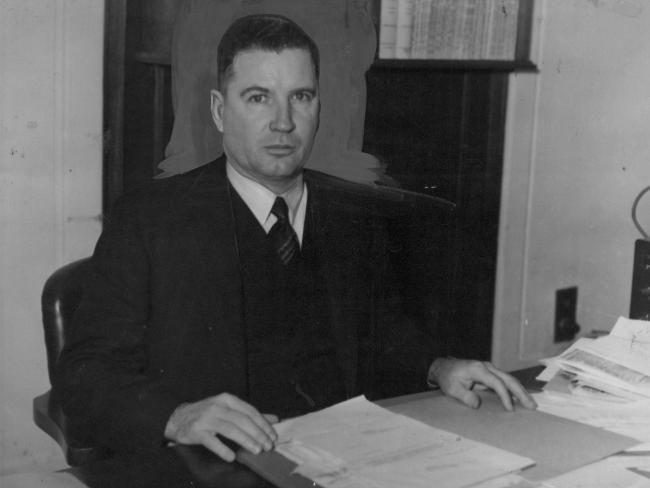 |
| Arthur Fadden circa 1941. |
Holocaust: The SS completes its execution of roughly 25,000 Hungarian Jews at Kamenets Podolski. The victims are made to march to bomb craters outside of town, undress, and then stand at the edge of the pits so that they will fall in when machine-gunned. Not everyone is killed by the bullets, but they succumb when other bodies fall on them and then when the pit eventually is filled in.
The incident is extremely cold-blooded and comes about only because Hungary has refused to take back the Jews, who previously had been expelled from or fled Hungary for the "safety" of the USSR. This led SS General Franz Jaeckeln to liquidate them as a matter of convenience.
At Kedainiai, Lithuania, SS troops conduct another mass execution using the usual method of marching the victims to pits outside of town and gunning them down so they fall into the pits. This is the entire population of the town. A Jewish butcher feigns death and then leaps up and bites an SS soldier in the throat, leading to the soldier's death. He is immediately shot dead.
There is a mass execution at Czyzewo-Szlachecki, Poland, of an uncertain number.
 |
| The main Metz train station, 28 August 1941 (Proietti, Ugo, Federal Archive, Bild 212-334). |
Nobody is punished for the demonstrations because Hitler knows that the Church is the only institution in the Reich that can challenge his own popularity. However, in private, Hitler mutters darkly to his cronies that he will get even with the Church and its leaders when the time is right.
Erich Fromm's "Escape from Freedom" (Die Furcht vor der Freiheit) is published in Germany. It becomes Fromm's best-known work. A philosophical work, "Escape from Freedom" examines medieval society to show that people may say that they want "freedom," but their acts and the institutions they create suggest exactly the opposite.
American Homefront: Reacting to a ban on a birth control exhibit at the New York State Fair held in Syracuse by acting Governor Poletti, Margaret Sanger writes an angry letter:
We have been informed that Mr. Poletti’s stand was taken as a result of protests by representatives of the Roman Catholic Church. If this be so, we protest as undemocratic and inimical to public welfare the fact that pressure of a minority religious group can effectively bar the majority of the citizens of New York State from information they desire on a subject considered of sufficient importance as a health measure to be included in the state public health programs of North and South Carolina and of Alabama, and in 209 health department programs in 39 states.Poletti does not change his mind, and the exhibit is not held.
Future History: John Stanley Marshall is born in Isleworth, Middlesex, England. John Marshall becomes a founding member of the jazz-rock band Nucleus and a major figure as a drummer who works with many jazz and rock bands and musicians.
August 1941
August 1, 1941: More Executions on Crete
August 2, 1941: Uman Encirclement Closes
August 3, 1941: Bishop von Galen Denounces Euthanasia
August 4, 1941: Hitler at the Front
August 5, 1941: Soviets Surrender at Smolensk
August 6, 1941: U-Boats in the Arctic
August 7, 1941: Soviets Bomb Berlin
August 8, 1941: Uman Pocket Captured
August 9, 1941: Atlantic Conference at Placentia Bay
August 10, 1941: Soviet Bombers Mauled Over Berlin
August 11, 1941: Rita Hayworth in Life
August 12, 1941: Atlantic Charter Announced
August 13, 1941: The Soybean Car
August 14, 1941: The Anders Army Formed
August 15, 1941: Himmler at Minsk
August 16, 1941: Stalin's Order No. 270
August 17, 1941: Germans in Novgorod
August 18, 1941: Lili Marleen
August 19, 1941: Convoy OG-71 Destruction
August 20, 1941: Siege of Leningrad Begins
August 21, 1941: Stalin Enraged
August 22, 1941: Germans Take Cherkassy
August 23, 1941: Go to Kiev
August 24, 1941: Finns Surround Viipuri
August 25, 1941: Iran Invaded
August 26, 1941: The Bridge Over the Desna
August 27, 1941: Soviets Evacuate Tallinn
August 28, 1941: Evacuating Soviets Savaged
August 29, 1941: Finns take Viipuri
August 30, 1941: Operation Acid
August 31, 1941: Mannerheim Says No
2020




